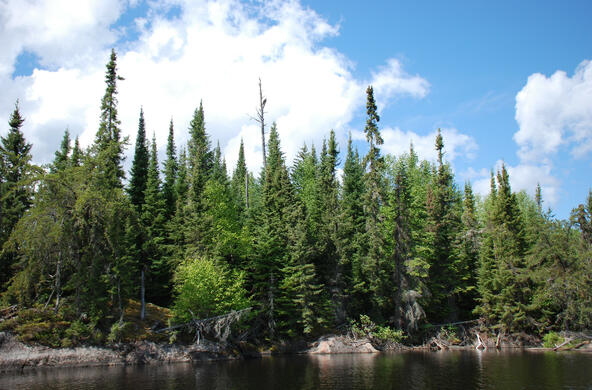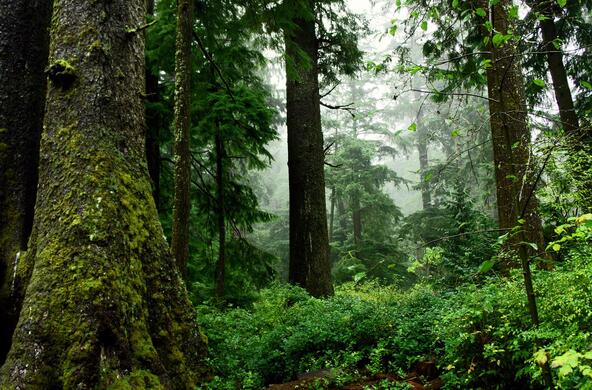There was nothing "normal" about the weather in the 2011 growing season. We started out with a tremendously wet spring, making planting vegetables and field crops challenging. Then we had a miserably hot, dry July, further stressing plants (and people!) with nine days over 90 degrees Fahrenheit. July was followed by record-breaking rain in August and September.
As of Oct. 16, Millbrook exceeded historical rain averages by more than 20 inches. We ended September about 313 growing-degree days ahead of the 24-year average for the season, which made it difficult for farmers to predict crop maturation and manage pests.
The crazy season leaves some of us wondering if climate change is causing a new "normal" for Hudson Valley weather, or if what we are seeing is just a seasonal glitch.
The devastating floods of 2011 were caused by Tropical Storm Irene, which brought 6.35 inches of rain from Aug. 27-28. A week later, Tropical Storm Lee followed, depositing another 5.77 inches in a four-day period Sept. 5-8.
While neither of these storms brought record-breaking rainfall, they resulted in record-breaking floods. Why was there so much flooding? And why was there so little flooding in September 1999, when Hurricane Floyd brought seven inches of rain to the area?
Looking at past data can help us answer this question. When Hurricane Floyd hit in 1999, we were five inches below normal for precipitation. Drier ground was able to absorb the rainfall, as were wetlands, lakes and ponds.
In comparison, before Tropical Storm Irene dumped rain on us, we had already exceeded average rainfall by 8.25 inches. The ground was saturated, and ponds, lakes and wetlands were full. Runoff and flooding prevailed because there was nowhere for the additional rainfall to go.
Increased rain, especially if it comes in pulses as it did during the 2011 growing season, combined with an increase in growing-degree days (signaling a longer mild season), can influence mosquito populations, causing them to emerge earlier, reach higher numbers and live longer.
This would be a boon for mosquito-borne diseases such as West Nile virus. A greater abundance and longer life for West Nile virus-carrying mosquitoes would increase the probability of human exposure and infection.
The National Oceanic and Atmospheric Administration's Climate Prediction Center forecasted that the 2011 hurricane season would have more named storms and major hurricanes than normal. Predictions don't include the tracks of the storms or whether they will go inland, because this is determined by factors present at the time of the storm. It's also uncertain what effect climate change will have on hurricanes, so flooding caused by tropical storms is not easy to predict.
However, the frequency of flood-producing precipitation events is expected to increase with climate change. Heavy rainfall events (more than two inches in 48 hours) have occurred more often in recent decades than in the early 20th century, and this trend is likely to continue under warming conditions.
Why does climate change cause more heavy rainfall events? Dave Wolfe, professor in Cornell's Horticulture Department, said rising ocean temperatures allow tropical storms to keep more of their strength as they travel northward over the ocean. Warmer waters can evaporate more moisture into the air, making more moisture available to create a stronger storm. Additionally, warmer air can hold more water vapor, which can condense into precipitation.
For communities along the coast, sea level rise is a concern. This occurs as polar ice melts and ocean temperatures warm, causing ocean water to expand. The sea level at the New York City harbor has risen about 16 inches during the last century. Higher ocean levels will allow storm surges to reach further inland than they have historically. Sea level rise will also cause the Hudson River to rise, potentially altering current shoreline areas.
In a warming world, there is expected to be an increase in the probability of extreme rainfall events, but it is impossible to determine if a particular storm would have occurred with or without climate change. Imagine a bag that holds white marbles, representing normal rainfall, and red marbles, representing extreme rainfall. Climate change adds more red marbles to the bag. If you randomly grab a red marble, you don't know if it was an original marble or one that was added by climate change.
What is clear, however, is that we are seeing many of the climate changes predicted in New York and in the Hudson Valley, including an increase in heavy rainfall events, with periods of short-term drought in between.
Given the facts, local communities and officials can start preparing now to reduce their risks and adapt to the climate changes that will continue.
Jessica Rennells is a climatologist at the Northeast Regional Climate Center at Cornell University, and Vicky Kelly is environmental monitoring program manager at the Cary Institute of Ecosystem Studies in Millbrook.






